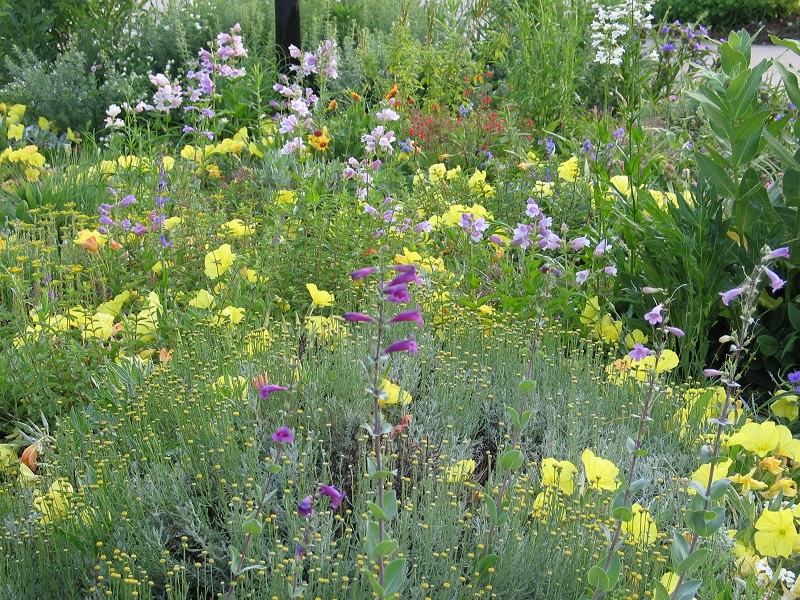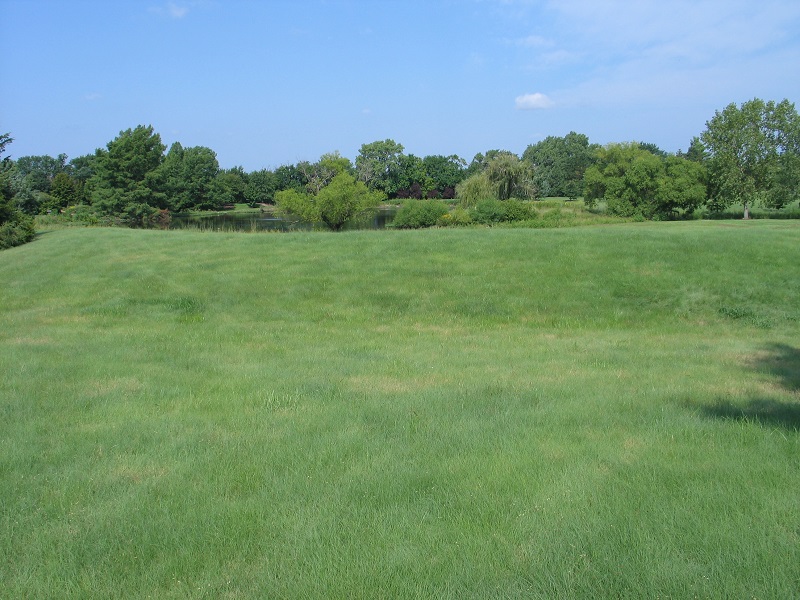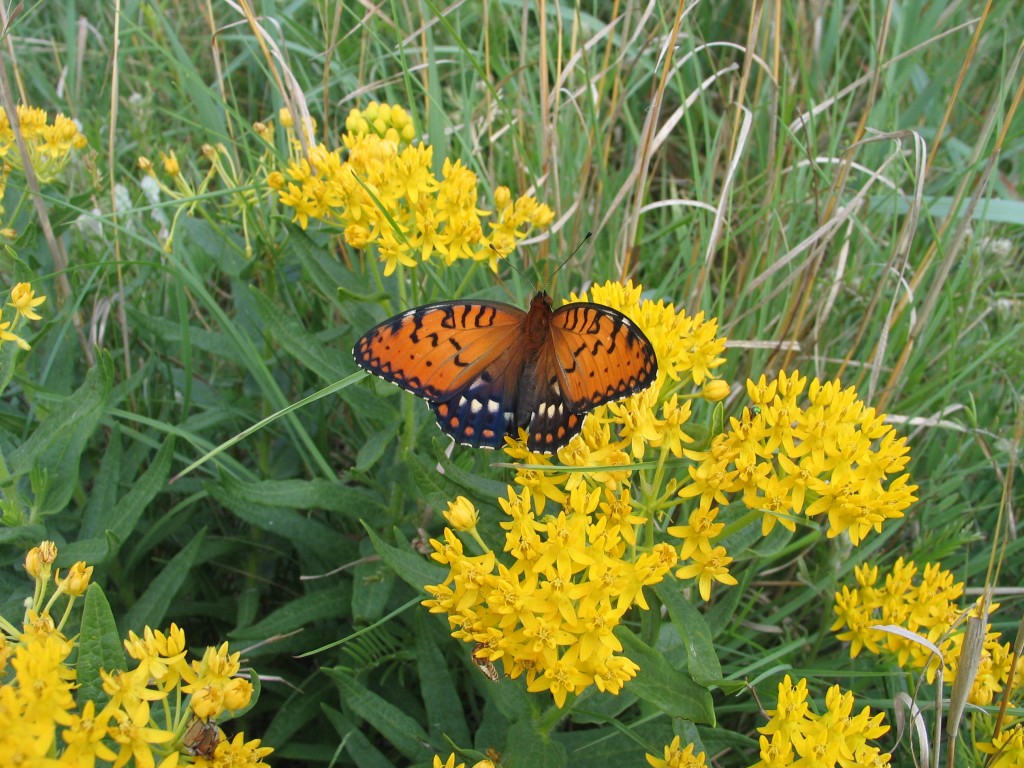Over the past few years, there has been a renewed emphasis on water conservation. An ever increasing number of communities in Kansas and elsewhere are realizing that water is a finite resource. These concerns are causing them to ask hard questions and ask homeowners to look for ways to reduce water usage, but still keep an attractive landscape.
The need for better stewardship of this precious resource, paired with higher municipal water rates, makes this a good time for us all to consider ways to reduce water consumption in our homes and in our landscapes. The basic approach to reducing water usage in the landscape centers on efficient design, proper site preparation, and the use of low water-demand plants. All these work together to help conserve water. Collectively, these principles make up an approach to landscaping termed “xeriscaping” (“xeri” meaning “dry”).
From the standpoint of design, a key principle is the reduction of turf area. Turf grasses such as fescue and bluegrass demand the most water of all of the components in the landscape. Consequently, reducing the amount of area planted with these turf grasses and thinking strategically about where and why we need turf areas will make a tremendous difference. Replacing them with deep rooted perennials and shrubs will also reduce water usage. Another option in sunny areas is to use buffalograss, a native, drought tolerant grass, in place of a high water-demand grass like fescue.
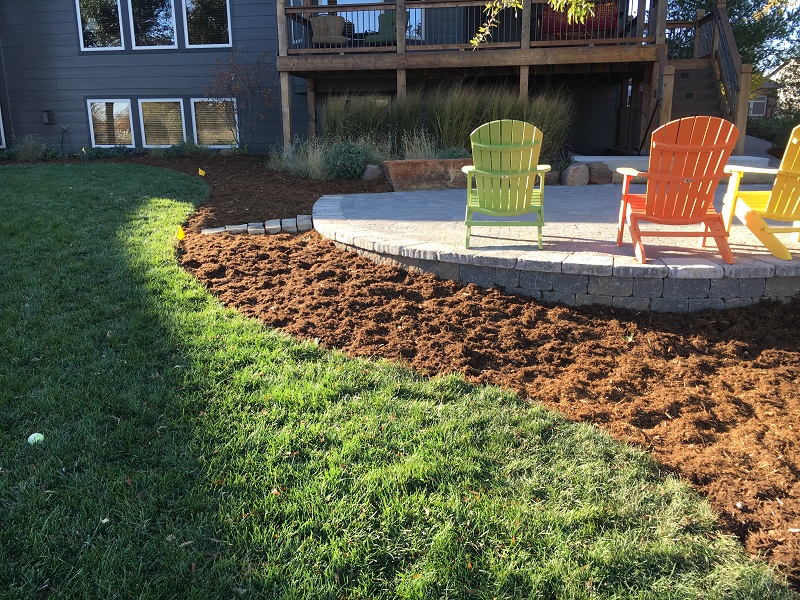
A home owner beginning to reduce the amount of turf in the landscape. These mulched areas were planted with drought tolerant perennials.
Another water-conserving measure that can influence your design is to separate the landscape into zones according to water usage, with areas that are difficult to water, or which are less-used, being planted with trees, shrubs and perennials that require less water to maintain them. Zoning an irrigation system to accommodate the water requirement of the different areas of the landscape further aids conservation.
Proper preparation of the site is also an important consideration. Constructing retaining walls, or terraces, where steep slopes favor excessive water runoff is one suggestion. The planting of deep rooted wildflowers and native grasses are another viable option to holding these slopes in place.

Planting wetland species along the Arboretum rain garden near the greenhouse. These plants quickly established and are holding the shore of the rain garden from eroding.
The use of mulches to cool the soil and reduce water evaporation is also helpful. A newer technique is the inter-planting of wildflowers and grasses that mimics the natural prairie system. By planting closely so all layers are covered with plants from the ground level to the higher, more ornamental plants, you will also reduce overall water needs while reducing weed competition.
Obviously, a major part of an overall water conservation program is the use of low water-demand plants. Native plants are particularly valuable for this, since they are already adapted to the region’s precipitation amounts and patterns as well as summer heat and winter cold. Once established, these plants should do well with little or no supplemental irrigation.
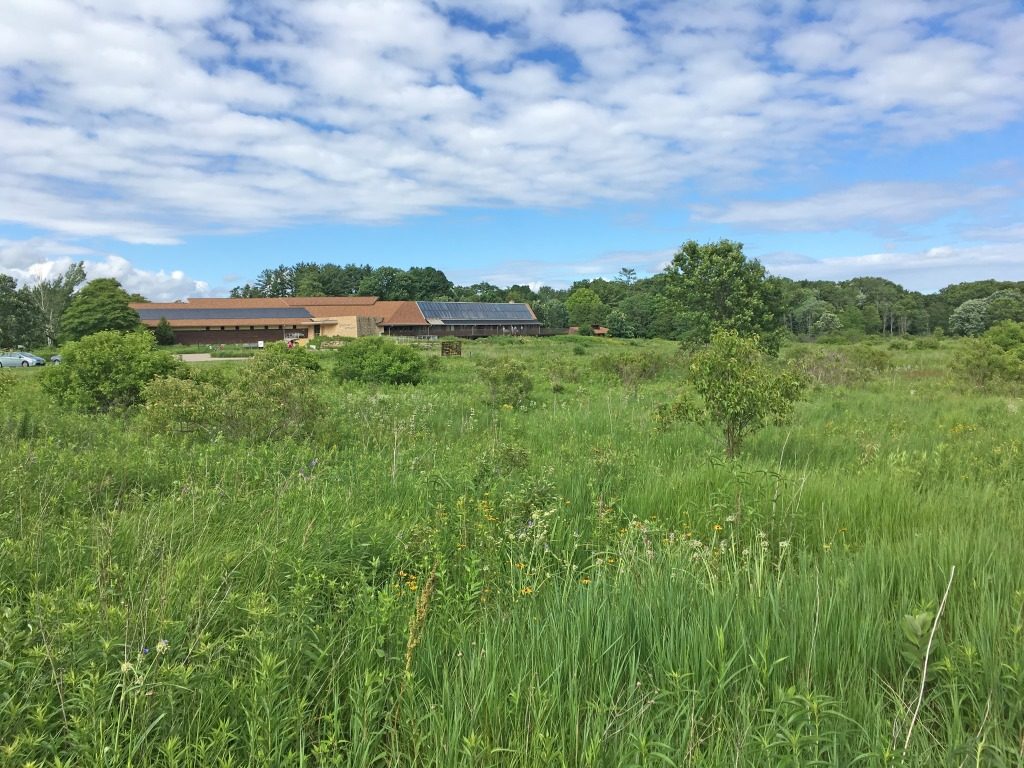
Curtis Prairie, the world’s oldest reconstructed prairie, at UW-Madison Arboretum. Photo by Brad Guhr.
At the Arboretum, we are concerned about water conservation from both an ecological and economic standpoint. We think critically about the plants we use. This is not a perfect system, but we manage to maintain our 30 acres with a water budget of only $7,000 or less. I think this is quite a feat, since we have so many intensively managed and beautiful display areas. Buffalograss is used extensively as turf and we select deep rooted native and adaptable perennial, trees, and shrubs.
The reasons for conserving water are many. It will take all of us doing our part to begin to reverse the water trends. Why wait to have water restrictions forced on us? With a few changes now, we can save ourselves money and benefit the environment in the process.

